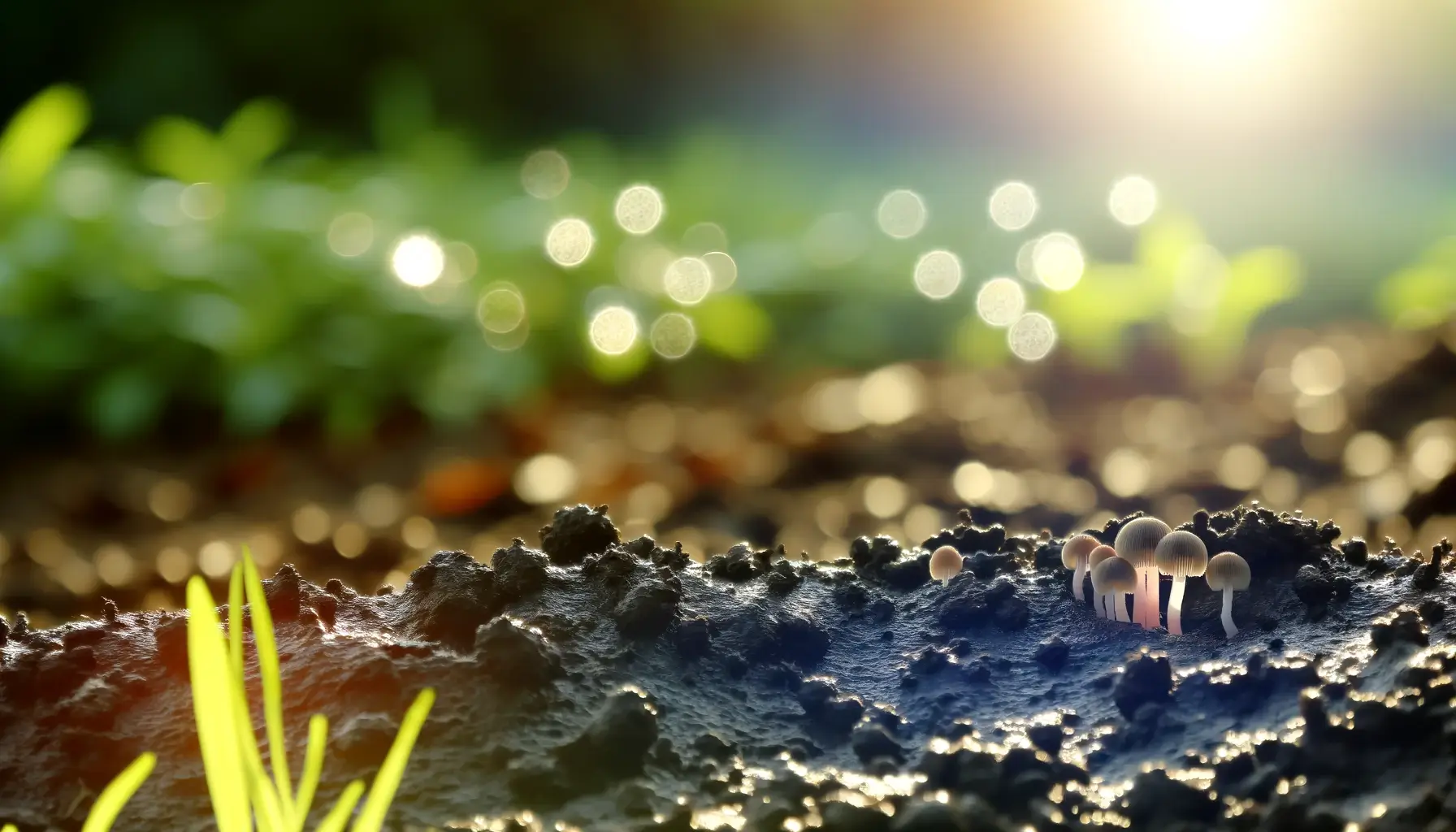Understanding the timeframe for mushroom spore germination is crucial for both amateur and professional mycologists. The germination period varies widely depending on various factors such as environmental conditions and the mushroom species in question. Generally, magic mushroom spores can take anywhere from a few hours to several weeks to germinate.
Here are some key takeaways to keep in mind:
- The germination time of mushroom spores is highly variable.
- Environmental conditions play a significant role in the germination process.
- Different species of mushrooms have different germination rates.
In the following sections, we’ll dive deeper into what influences the germination time of mushroom spores, how you can optimize conditions for faster germination, and some common challenges you might face.
Factors Influencing Germination Time
Optimal Conditions
For mushroom spores to germinate effectively, they require a suitable combination of humidity, temperature, and substrate. The ideal conditions vary significantly between species, making it essential to research the specific requirements of the mushrooms you wish to cultivate.
- Temperature: Most mushroom spores thrive in temperatures between 70-75°F.
- Humidity: A humidity level of 85-95% is often optimal.
- Substrate: The material or substance on which the spores will grow must be nutrient-rich and suitable for the mushroom species.
Species-Specific Requirements
Different mushroom species have inherently varying requirements for successful germination. For instance, Pleurotus ostreatus (Oyster Mushrooms) may germinate faster than Psilocybe cubensis under similar conditions.
| Mushroom Species | Average Germination Time |
|---|---|
| Pleurotus ostreatus | 5-7 days |
| Psilocybe cubensis | 10-14 days |
| Agaricus bisporus | 7-10 days |
For more detailed guidance on mushroom spores, visit SporesMD.
Optimizing Conditions for Faster Germination
Ensuring optimal conditions can significantly reduce the germination period of mushroom spores. Here’s how you can achieve this:
Maintaining the Perfect Environment
Creating a controlled environment is paramount. This may involve the use of specialized equipment like incubators or humidity chambers to maintain stable conditions.
- Regulate temperature: Use a thermostat to keep the environment within the ideal temperature range.
- Maintain humidity: A humidifier can help maintain the necessary humidity levels.
- Optimal substrate preparation: Ensure your substrate is properly sterilized and prepared.
Adjusting to External Factors
Be prepared to adjust your setup based on external factors like changes in ambient temperature or humidity. Keeping a close eye on these conditions will help you take proactive steps to maintain the ideal environment.
List of Equipment for Optimizing Germination Conditions:
- Thermostat
- Humidifier
- Hygrometer (for measuring humidity)
- Incubator or growth chamber
Addressing Common Germination Challenges
Contamination and Its Prevention
One of the most significant challenges in mushroom cultivation is preventing contamination. Contaminants can significantly delay or even prevent the germination of mushroom spores.
- Sterilization: Sterilize all equipment and substrates before use.
- Good hygiene practices: Always employ good hygiene practices such as wearing gloves and using a mask when handling spores and substrates.
Adjusting for Slow Germination Rates
If germination is taking longer than expected, it’s important to reassess the environmental conditions and make necessary adjustments. This may involve tweaking temperature or humidity levels or even re-sterilizing substrates to eliminate potential contaminants.
Steps to Address Slow Germination:
- Review and adjust temperature and humidity levels.
- Check for signs of contamination and take corrective action.
Future of Mushroom Spore Germination Research
The field of mycology is constantly evolving, with new studies shedding light on the intricate details of magic mushroom spores germination.
Innovations in Cultivation Techniques
Advancements in technology are enabling mycologists to experiment with new cultivation techniques, potentially reducing germination times and increasing yield.
- Genetic modification: Although controversial, there are ongoing studies exploring the impact of genetic modification on germination rates and overall mushroom growth.
- Artificial intelligence: AI and machine learning algorithms are being used to predict the best conditions for mushroom growth, optimizing the germination process.
The Impact of Climate Change
As the climate continues to change, understanding how these shifts impact mushroom spore germination will be critical. Research in this area can provide insights into how to adapt cultivation techniques to ensure sustainable mushroom farming practices.
References:
- https://gluckspilze.com/4myzelkultivierung-1
- https://youtube.com/watch?v=WiaWQRSm2w0
- https://www.shamanmushroomspores.com/magic-mushroom-spores-germination-and-how-they-begin-their-life-cycle/
- https://www.shroomery.org/forums/showflat.php/Number/3529408/fpart/all
- https://fungushead.com/the-science-behind-spore-germination-how-magic-mushrooms-begin-their-life-cycle/
By delving into these aspects and addressing common challenges, enthusiasts and professionals can enhance their understanding and success rates in mushroom cultivation.

